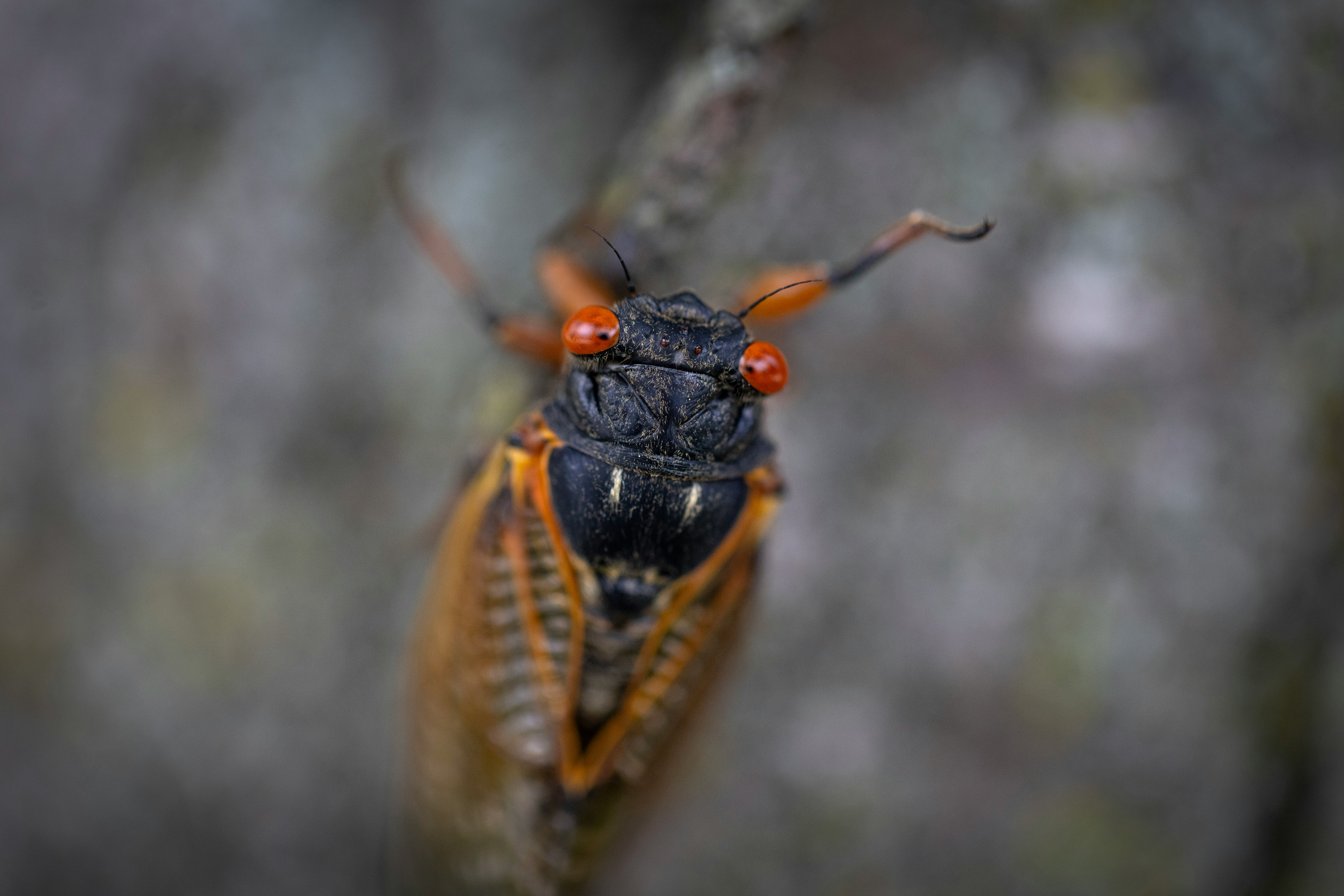
With their glowing red eyes, cicadas look like tiny screaming aliens. To add to the effect, they come from underground, squirming forth every few years, they molt and leave their old exoskeleton absolutely everywhere, they freak out kids and entice dogs. It’s not hard to picture them starring in an old-school B-movie: Cicadas! From! Space! That’s why entomologist Chris Simon is eager to remind us that they’re really just Earthlings like us.
“They don’t invade”, Simon tells Inverse. “They have been here the whole time, quietly feeding on roots underground.
Even so, it’s tempting to wonder what might happen in a science-fictional reality. After all, cicadas spend most of their lives burrowed underground, quietly chugging sap from tree roots, counting the changing seasons, and waiting for the gently warming soil to tell them it’s time to emerge and scream at the world. And hiding underground is one way astrobiologists imagine alien life forms might survive on planets where conditions are occasionally too harsh for life.
Here on Earth, animals from cicadas to lungfish and frogs to small mammals burrow beneath the surface for insulation from harsh winter cold, scorching summer heat, or to avoid drying out on the drought-stricken surface. But could that strategy keep something like a cicada alive on a planet like Triolaris in The Three-Body Problem, which is only habitable part of the time – or the real exoplanet Ross 508 b, which dips into its star’s habitable zone once every few days but is otherwise just a little too hot for life?

Could Cicadas Make it As Aliens?
Immediately after they hatch, cicadas dig their way into the ground. Entomologists have found them burrowing as deep as 2 feet below the surface. That’s below the frost line – the depth at which soil freezes – in most of the southern U.S., enabling the nymphs to ride out chilly winters in their cozy burrows.
Being buried beneath a couple feet of soil provides some insulation against extreme summer heat, too. So it’s tempting to imagine periodical cicadas thriving on a world with a long, elliptical orbit: burrowing underground to slowly grow in the dark while the planet swings out into the chilly outer reaches of its star system, and emerging again when it swoops closer to the Sun. We can also imagine the reverse: cicada-like aliens on Ross 508 b hiding underground for a few days at a time while the planet passes too close to its star, then emerging for a few days when temperatures at the surface won’t cook them.
But there’s a problem: cicadas might be able to shelter underground, but they still depend on surface life for their sustenance.
“The cicadas are not underground doing nothing – they are feeding on plant roots,” University of Connecticut entomologist John Cooley tells Inverse. “If the plants die, so do the cicadas.”
Yucca Moths, On The Other Hand...
A better alternative, suggests Simon, might be something like yucca moths. These desert-dwelling insects depend on flowering yucca plants to finish their life cycle, but the grubs (or larvae) can wait years underground for the right conditions, protected inside tough cocoons that keep them from drying out. One study caught yucca moth larvae emerging from this state alive after 30 years.
And then there are the lake flies, members of the insect family Chrionomidae. The larvae of several species can pump nearly all the water out of their bodies and dramatically slow down their metabolism, which they do automatically if the weather gets too dry or too hot. At least one species of these hardy little bugs can survive for more than a decade just waiting for someone to come along and add water.
Even these incredibly resilient insects aren’t quite cut out for life as aliens, though. Hiding underground gives yucca moths some shelter from extreme heat and cold, but probably not enough to survive on a world like Ross 508 b. And some species of lake fly larvae have survived temperatures above boiling for a few minutes – but they recovered only temporarily, so it’s unlikely they’d survive several days at a time of scorching heat on Ross 508 b.
Attack of the Ten-Foot Water Bears
If you want a creature that can survive heat, cold, dehydration, and radiation, you want a tardigrade.
Tardigrades are microscopic animals that normally live in fresh water, and they're nearly (but not quite) indestructable. Like the lake flies above, they can pump nearly all the water out of their bodies and slow their metabolisms down to about 0.01 percent of their usual rate. They also have incredible DNA repair genes, which helps them cope with radiation.
These tough little animals can endure extreme cold, hard vacuum, and cosmic radiation — which we know because they’ve ridden on the outside of spacecraft several times. If you want to kill a tardigrade, you pretty much have to fire it into a metal wall at high speed. That makes giant tardigrades the perfect stars for our hypothetical weird B-movie — even if they don’t have the same alien shrill as cicadas. You can’t win them all.







